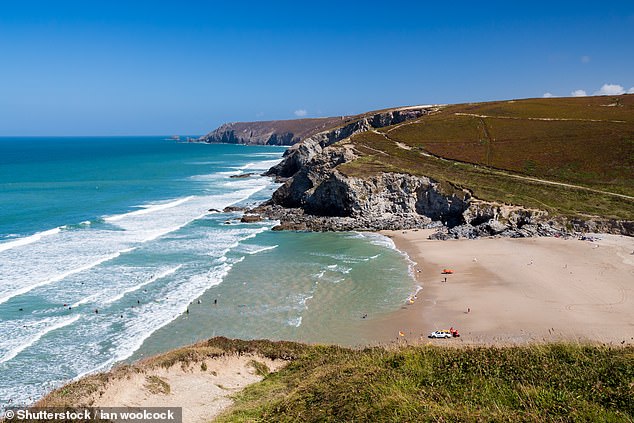Table of Contents
With a subtropical microclimate, world-famous pasties and pretty seaside villages, a holiday in Cornwall is hard to beat.
But it is the beautiful beaches that are the biggest draw for many.
Cornwall has Britain’s longest coastline (697km/433 miles long) and over 400 beaches, so choosing just one can be difficult.
But there’s no need to feel overwhelmed, because here we’ve selected eight gems, from places of wild, isolated beauty to family-friendly stretches of sand.
Which one would you most like to visit? Vote in our poll…
Porthtowan Beach
Cornwall has Britain’s longest coastline and more than 400 beaches, so it can be difficult to choose just one. Here are eight of the best as chosen by MailOnline. Porthtowan Beach, seen here, is one of the best family beaches in North Cornwall.
Described by Visit Cornwall As a “soft sandy beach, surrounded by rugged cliffs”, Porthtowan is one of the best family beaches in North Cornwall.
There is a children’s play park and families will also find plenty of rock pools to explore along the shoreline.
Porthtowan is lifeguarded from 4 May to 29 September and is considered one of the best surfing beaches in the region.
Better yet, it has been awarded the Blue Flag for the 2024 season, meaning it meets the highest standards for coastal water quality.
Gyllyngvase Beach
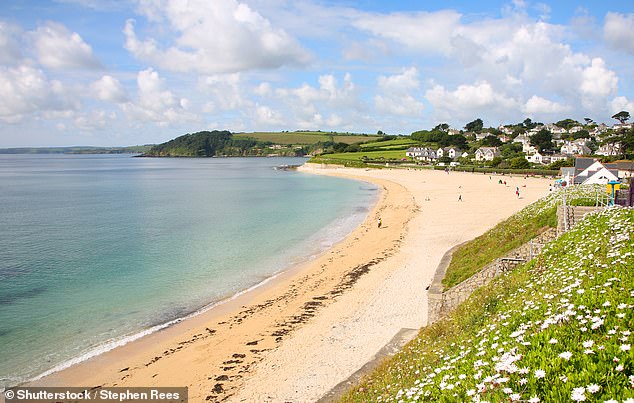
Gyllyngvase (above) is a Blue Flag beach and is situated just 10 minutes from Falmouth town centre, making the beach just a short walk from the ice cream sellers.
Difficult to pronounce (locals call it Gillingvayz), but incredibly beautiful – this is Falmouth’s “largest and most popular” beach, according to Visit Cornwall.
The tourist board praises its “soft, pale sands” that are “ideal for sandcastles”, while families can head to the southern end of the beach to enjoy rock pools and spot lobsters.
Gyllyngvase is a Blue Flag beach and is situated just 10 minutes from Falmouth town centre, making the beach and ice cream vendors just a short walk away.
Lifeguards are on patrol from mid-May to late September, while dogs are prohibited during the same period.
Sennen Cove
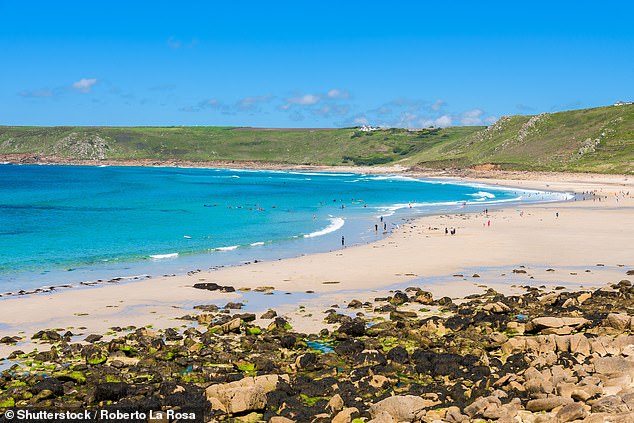
Visit Cornwall says: ‘Sennen Cove (above) offers everything you need for a beach holiday – sand, sea and surf’
Just a 10-minute drive from Land’s End, Sennen Cove is a long sandy beach that is close to shops and cafes.
Visit Cornwall says: “Sennen Cove offers everything you need for a beach holiday – sand, sea and surf. Walk down the hill from Sennen village and it won’t be long before your view is filled with sea and sun.”
Sennen Cove is a 2024 Seaside Award winner, meaning it is one of the best beaches in the country for water quality, safety and the environment.
Pedn Vounder Beach
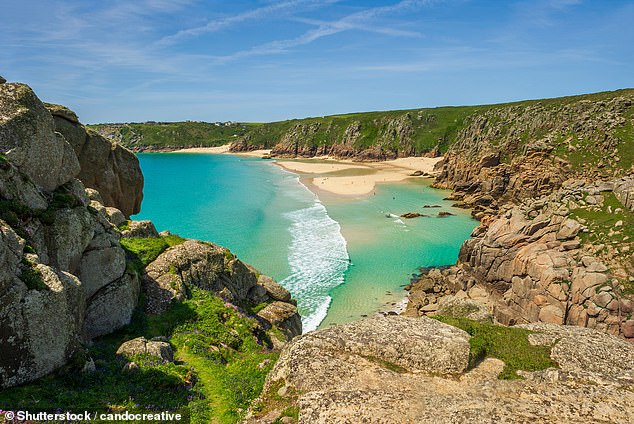
Pedn Vounder, seen here, is a “secluded slice of paradise” with “an abundance of natural beauty”, according to Cornwall Beaches.
Pedn Vounder is an “isolated piece of paradise,” according to Cornwall Beaches.co.uk which says this is “possibly the best beach in Cornwall”.
The team adds: “Once a hidden gem, Pedn Vounder is now something of an Instagram favourite, but with so much natural beauty it’s not hard to see why.”
Located near Land’s End, the beach is famous for its crystal-clear waters and beautiful white sandy shore.
It is close to Cornwall’s famous Minack Theatre and is also considered an unofficial nudist beach.
Daymer Bay
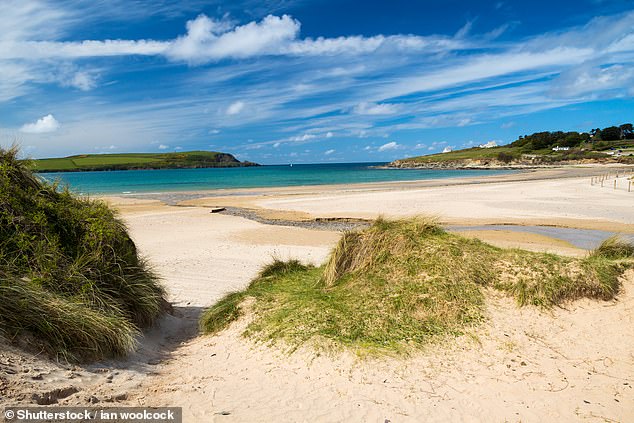
On Cornwall’s Camel Estuary, Daymer Bay (pictured) is a popular kitesurfing spot within a designated Area of Outstanding Natural Beauty.
Daymer Bay, a sheltered bay on Cornwall’s Camel Estuary, is a popular kitesurfing spot and offers good conditions for beginners.
Visit Cornwall says: ‘A stunning beach which at low tide forms long stretches of golden sand backed by dunes all the way to Rock, with magnificent views across the Camel Estuary.’
The Camel is an Area of Outstanding Natural Beauty and, despite its name, has nothing to do with the humped animals. Its name comes from the Cornish term “Dowr Kammel”, meaning “crooked river”.
If you want to add a little sightseeing to your day, Daymer Bay is also home to a Saxon heritage chapel.
Juncosa Bay
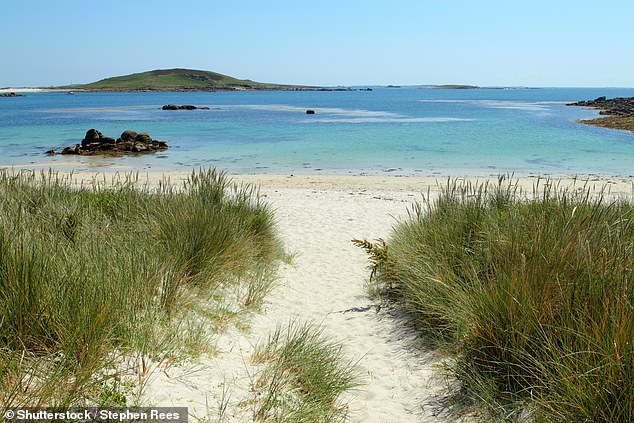
In the Isles of Scilly, off the coast of Cornwall, Rushy Bay, seen here, is the largest beach on Bryher Island: it has fine sand and, for keen historians, the remains of a Civil War-era gun battery.
Located in the Caribbean-like Isles of Scilly off the coast of Cornwall, Rushy Bay is the largest beach on the idyllic Bryher Island.
lonely planet He says: ‘Bryher is surrounded by fabulous beaches, but many would say (Rushy Bay) is the most beautiful.
‘Facing south and sheltered by the Watch Hill mound, it has powder-soft sand and is ideal for swimming.’
Keep an eye out for the remains of a Civil War-era cannon battery that can be seen from the eastern end of Rushy Bay.
Polridmouth Cove
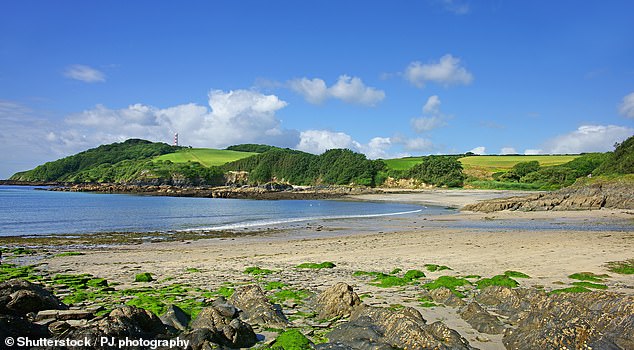
Polridmouth Cove, shown here, is situated on the South West Coast Path and includes a seawater bath built into the rocks, but can only be reached on foot.
Despite Cornwall’s popularity, Polridmouth remains a “quiet, sheltered cove,” according to Visit Cornwall. This is because the only way to reach this beach is on foot.
Visit Cornwall says: ‘The beach is shrouded in history, from its intriguing seawater bath built into the rocks by the Rashleigh family to the 1920s ornamental lakes that back the beach.’
Polridmouth Cove is on the South West Coast Path, so could be the ideal spot for a short beach break if you’re attempting the walk. The beach also served as inspiration for the setting of Daphne Du Maurier’s 1938 gothic novel, Rebecca.
Hemmick Bay
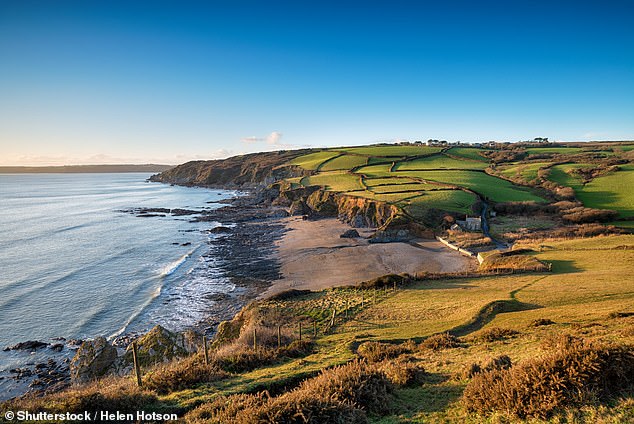
Hemmick Bay (above) is located on the south coast of Cornwall and is described by Visit Cornwall as a ‘secret beach’.
Hemmick Bay is a small west-facing cove on the county’s south coast and is described by Visit Cornwall as a “secret beach” as it can only be accessed via a “narrow, steep road”.
The team comments: “Hemmick is a quiet and secluded bay, a beautiful sandy beach surrounded by rolling grasses and dramatic rocky headlands. It is wild and untamed, with plenty of little coves and rock pools to explore at low tide.”
Hemmick Bay is less than a mile from The Dodman, one of the highest headlands in South Cornwall, renowned for its spectacular views.


